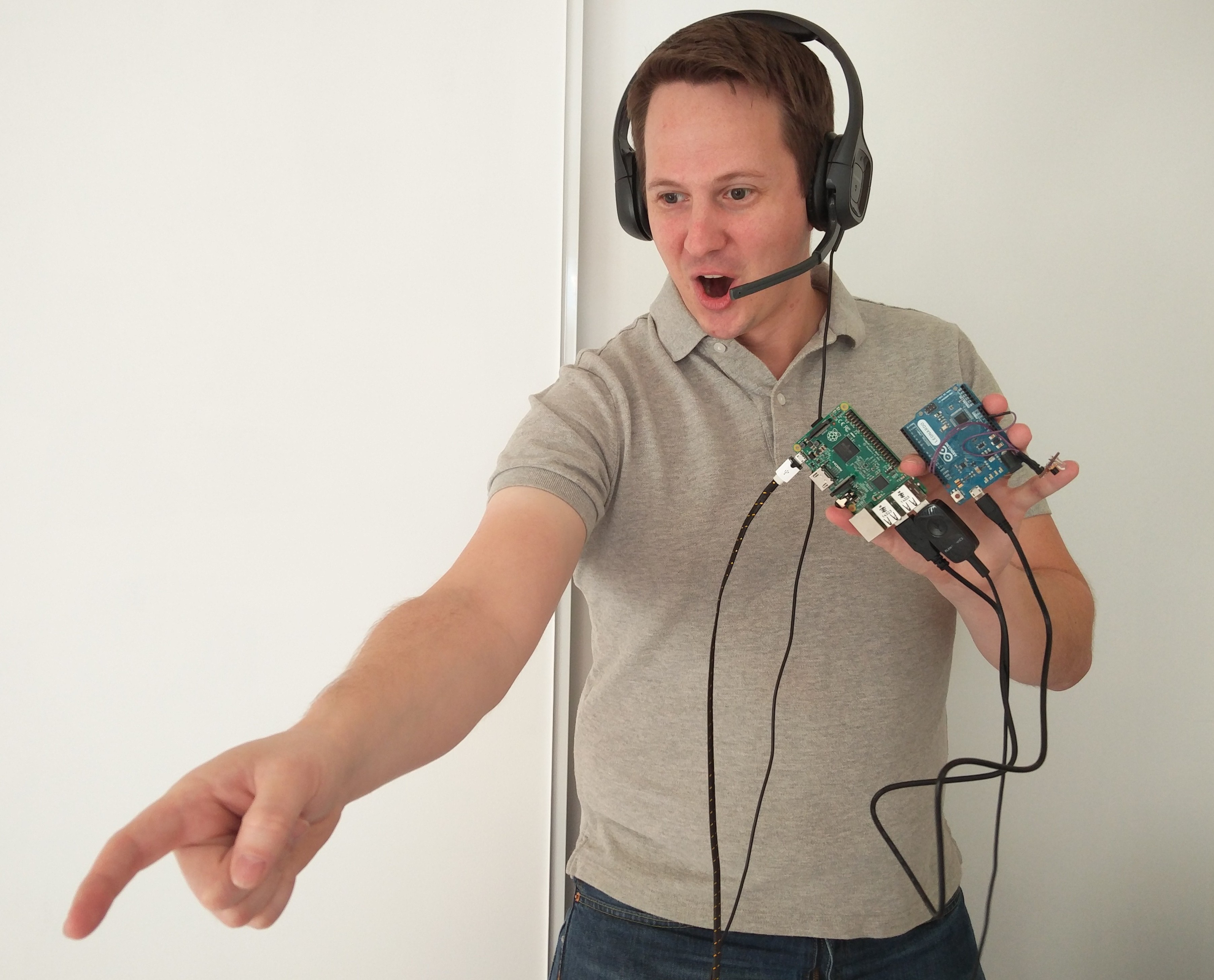
It’s an old saying that computers aren’t really smart, because they only do what we tell them to do. But now you can actually tell your Raspberry Pi to do something smart — to take control of connected devices in your home — using only your voice. It’s not hard — you can do it easily using some open source software and a Raspberry Pi. Just add an Arduino with an infrared (IR) LED and you can tell your Roomba what to do, too.
Shall We Say a Game?
This project is made possible by years of research by scores of scientists, engineers, and linguists around the world working to enable real-time voice recognition that can run on modest hardware — the sort of advances that have brought us Siri on Apple devices and the voice recognition capabilities built into Google’s Android.
Specifically, I’ll show you how to use an open source speech recognition toolkit from the Speech Group at Carnegie Mellon University called PocketSphinx, designed for use in embedded systems. This amazing library allows us to delegate the heavy lifting of turning sound into text, so we can focus on implementing higher-level logic to turn the text into meaningful actions, like commanding the lighting systems in your home and even your Roomba vacuum cleaner. It also allows us, as Makers, to get under the hood and experiment with aspects of a speech recognition engine that are usually reserved for those implementing the engines or studying them in academia.


